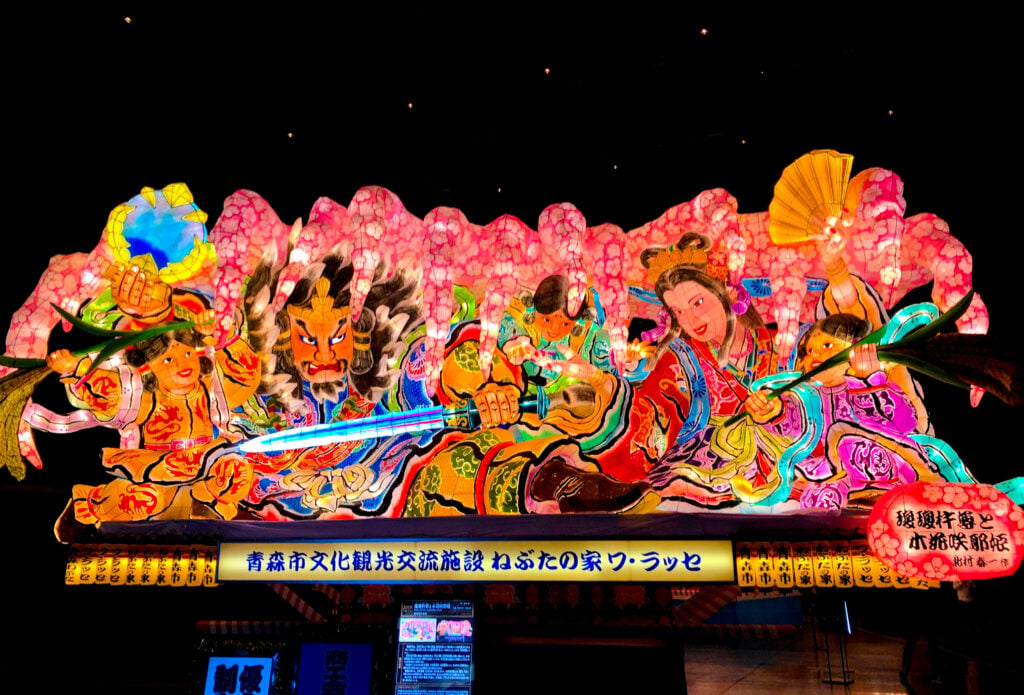If you’re a fan of anime and have watched the latest season of Dr. Stone, you’ve probably heard the protagonist, Zenku, saying the phrase “sosoru-ze, kore wa.” (唆るぜ、これは, this is exhilarating).
This is one example of anime-specific Japanese that you will not hear in real life.
If you watch different genres of anime, you have most likely noticed that every fandom has its own set of specific vocabulary not seen elsewhere. From One Piece (ワンピース) to Violet Evergarden (バイオレットエヴァーガーデン), almost every anime is guilty of adding nonsensical phrases and over-the-top lines to give anime characters personality.
Today we will look at some examples of what kind of Japanese is typical for anime Japanese and compare it to real life Japanese. Read on to learn more!
Why is Japanese in anime different from real life Japanese?
If you are using anime to learn Japanese, it’s important to understand that Japanese in anime does not always reflect the language that is spoken in real life. Some reasons that anime characters may use uncommon vocabulary are:
Time period: If the storyline is set during the Edo period or other older periods, then it makes sense for the characters to use terminology common during that era.
Personality: To lift a certain personality trait such as making a character cuter, it is common to let them use certain words and speak in a certain way.
Setting: If the anime takes place, within the aristocratic quarters of a foreign country, the writers may reflect this by using over-the-top formal Japanese.
Nationality: When the character is a non-native Japanese, this is often reflected by letting the character speak Japanese like a three-year-old with a catastrophic intonation.

Some characteristics of Japanese in anime
Creating fiction such as manga and anime is all about being creative, not least with the language. In this way, new ways of speaking unique Japanese are born with every new work. Let’s take a look at some examples from different franchises on how Japanese in anime differs from real-life Japanese!
Adding a nonsensical sentence-final word
More often than not you will find that anime characters end their sentences with something that makes the character unique but doesn’t make sense in a real-life context. The most famous example is probably Naruto adding “Dattebayo” (だってばよ), which doesn’t mean anything.
Here are some lines from some anime characters in different franchises, and what their counterpart is in regular Japanese:
Example 1: Beatrice from Re:zero kara hajimaru isekai seikatsu (episode 36)
Beatrice tends to add the sentence-final particle “-kashira”, which is the more feminine version of “kana”. The word adds uncertainty to the statement and is often translated as “I wonder”.
Dō suru tsumori kashira.
どうするつもりかしら。
What do you intend to do? (I wonder).
Note that this sounds weird because Beatrice is saying this directly to Subaru, but in reality, using kashira in this way makes it sound like she is talking to herself. Here is what you would say in day-to-day Japanese:
Dō suru tsumori nano.
どうするつもりなの?
What do you intend to do?
Example 2: Bartolomeo from One Piece Film: Red
Bartolomeo has the stereotype of a “country bumpkin” with a unique speech style where he ends his sentences with “-be” or “-dabe”. This is a copula that originates from northeastern Japanese dialects.
Shitteta nara hayaku itte hoshikatta be!
知ってたなら早く言って欲しかったべ!
If you knew it I wish you would’ve told me sooner!
While using “da be” isn’t completely obsolete, and for example still somewhat common among male youth in Yokohama, it is probably nothing you wouldn’t say unless you were in a very specific situation. The equivalent in regular Japanese is:
Shitteta nara hayaku itte hoshikatta’n da!
知ってたなら早く言って欲しかったんだ!
If you knew it I wish you would’ve told me sooner!

Using Japanese that is over-the-top
Another thing you often encounter in spoken Japanese in anime and manga is the usage of exaggerated language. The purpose is to strengthen the image of a certain stereotype such as a “bad-boy” or an “aristocrat”. Note that this kind of Japanese is not technically wrong, it’s just Japanese that you would very rarely use in a real-life context unless you maybe want to pick a fight with someone.
Let’s look at some examples!
Example 1: Yamato from One Piece (episode 1057)
In this episode, a female character says the following line:
Nakama da to omowanaide kure.
仲間だと思わないでくれ。
Don’t think of me as your ally.
This is technically not wrong in any way, but using the word “kure” instead of “kudasai” gives it a condescending tone, and I would not recommend using this word even towards your best friends.
Example 2: Ken Ryūguji from Tokyo Revengers (episode 3)
The following line is spoken when the protagonist tries to save his friend from a bully.
Dare ni mukatte kuchi kiite’n da yo.
誰に向かって口きいてんだよ。
Who do you think you are talking to?
What makes this sentence sound so aggressive is the suffix “da yo”. Using this word in itself is no problem.
For example, there is nothing weird in saying
Kyō wa nichiyōbi da yo. (今日は日曜日だよ, today is Sunday).
However, using “da yo” when questioning another person sounds very aggressive and is not recommended in any circumstance.
Example 3: Violet from Violet Evergarden (episode 1)
Finally, let’s take a quick look at how Violet from Violet Evergarden speaks Japanese.
First of all, Violet is seen as an “elegant lady”, by her excessive usage of keigo (敬語, formal Japanese). Of course, keigo is widely used in Japan, but what makes it unnatural is the excessive use, and how she uses it towards anyone, even small children.
Furthermore, Violet is also portrayed as an automaton doll with difficulties understanding human feelings. One example is:
Taipu-raitaa nara sōsa-kanō desu.
タイプライターなら操作可能です。
I’m able to operate a typewriter
The excessive use of jukugo (熟語, words consisting of two- or more kanji) makes the sentence sound like written Japanese which you would typically find in an essay. Excessive usage of jukugo instead of regular words is a common practice within fiction to portray non-human characters such as robots, or AI who lack human emotions. A more natural way of saying the same sentence would be:
Taipu-raitaa nara sōsa-dekimasu.
タイプライターなら操作できます。
I can use a typewriter.

Unusual first and second-person pronouns
Finally, let’s take a look at how anime characters use first and second-person pronouns. First person pronouns are ways to address oneself (I, me) and there are a lot of them in Japanese. Some common examples are watashi (私), boku (僕), and ore (俺)
Second-person pronouns are as you may have guessed, ways to address another person (You). Some common examples are anata (貴方), kimi (君), and omae (お前).
Before we continue, it needs to be said that the most common way to address a person in Japan is by avoiding the word “you” altogether and instead use the person’s name together with an honorific such as -san (さん), -kun (君), -chan (ちゃん) or sama (様). If you want to know more about honorifics, check out our article here!
Different pronouns have different nuances in Japanese. That is one reason why there are so many of them. For example, using atashi instead of watashi makes you sound more feminine. Using omae instead of the person’s name makes it sound more rough or confrontational.
However, there are a lot of different pronouns that are rare in day-to-day Japanese. For example see the following sentence by a female character, Power, from Chainsaw Man (Episode 5).
Akuma-me, washi ni bibitte ukiyatta wai.
悪魔め、わしにビビッて浮きやったわい。
Damn demon, got scared of me and started floating.
Here we have the pronoun washi which is rarely heard in day-to-day Japanese and is a pronoun used by older men towards people of the same rank or lower. Similarly, the suffix wai is not modern Japanese and is most commonly used by fictional characters of old age.
Here are some other examples of stereotyped pronouns in anime.
First-person pronouns:
Warawa (妾 / 童) – Used to portray a “mistress”.
Sessha (拙者) – Used by samurais as a first pronoun.
Wagahai (吾輩) – Commonly used to portray animals and has a nuance of self-importance. Another word often used is oira (おいら).
Yo (余) – Used to portray a character of very high status such as a king.
Kochitora (此方人等) – Used during the Edo-period as either “I” or “we”, but is nowadays sometimes used to portray thugs or yakuza.
Second-person pronouns:
Soregashi (某) – Commonly used to portray a samurai. Another word that is often used for this purpose is sonata (其方)
Onore (己) – An aggressive or rude way to address someone
Onushi (お主) – Used in large variations in fiction by animals, wizards, and celestial beings, among others.
Kiden (貴殿) – a respectful way to address someone among nobles
Nanji (汝) – Used by ancient beings such as gods or ancestors
Learn more Japanese with Go! Go! Nihon
The topic of Japanese in anime is vast, and it is impossible to cover the entire scope of differences from day-to-day Japanese. But we hope that you have gotten an understanding of what kind of differences are common. If you can come up with other examples, share them below!
If you want to learn real Japanese and speak with real people, we offer a completely free service to help you take a language trip to Japan and study Japanese at one of our partner language schools. For more information, contact us today!
If you want to learn more about Japanese culture or life in Japan – feel free to follow our blog!













